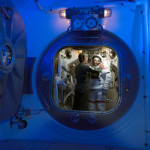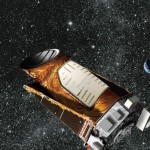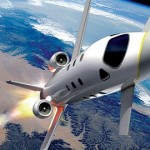How will this giant balloon perform experiments at the edge of space? The Big Space Balloon will be Britain’s largest high-altitude research balloon, taking experiments up to the edge of the cosmos and exploring the upper echelons of our atmosphere. It is set to launch mid- to late-2014, carrying a capsule full of scientific experiments …
Category Archive: Space
How do Airlocks Work in Space
How do these chambers safely transit astronauts from a spacecraft out into the vacuum of space? Airlocks, typified by the International Space Station’s (ISS) primary Quest Joint Airlock, are designed to permit safe passage of people and objects between a pressurised vessel and its surrounding environment. Further, they are designed to minimise pressure and air-level …
Image of Earth From Space
Taking an image of Earth is no easy feat. Since NASA’s Explorer 6 satellite first took a blurry photo of our world back in 1959, methods and techniques to snap that perfect picture of our home have come on leaps and bounds, and the images often become very famous. In fact, 2002′s Blue Marble image …
How was the Moon Made
Between 363,570 and 405,410 kilometres (around 220,000-250,000 miles) from Earth is our only natural satellite, the Moon. It’s very different from its mother planet: it has around one-eighth of the Earth’s mass, a very thin, almost negligible atmosphere and it’s completely devoid of life. Yet at the same time
Is There Life on Planet Mars
It seemed a lonely existence just to see as far as what we thought was the edge of the universe 100 years ago. Turns out, it was just the far fringes of the Milky Way. Now our most powerful orbital telescopes can send us images of galaxies billions of light years from Earth, and though …
Zone of Avoidance
What is this region in space and why do stars and even entire galaxies appear to shun it? The Zone of Avoidance (ZOA) is a narrow band in the night sky in which very few galaxies can be seen. To reflect this barren-looking region, astronomers nicknamed the band the “Zone of Avoidance’, as compared to …
Private Space Travel – Next Generation Spacecraft
Elon Musk – The 41-year-old American, who was born in South Africa, earned his fortune by creating PayPal, the ubiquitous online payment service. Musk also founded SpaceX in 2002, which develops rockets and space capsules. Mission: Carry people and cargo to the International Space Station and beyond in SpaceX rockets.






















